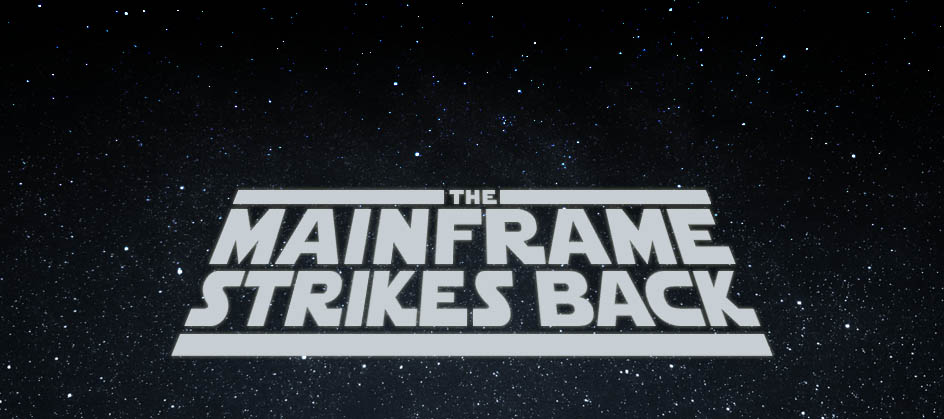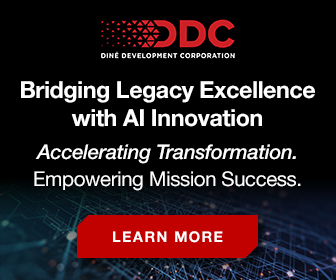With the mainframe’s star in the ascendancy yet again, we need to seize the opportunities presented while recognizing the risks, writes Mark Wilson, RSM Partners
I was just sixteen when I started working with mainframes. That was in May 1980, a month that also saw the release of The Empire Strikes Back. In the intervening years, neither big iron nor the Star Wars universe have been very far away. In fact, both the mainframe and Star Wars seem more relevant today than ever. While I can’t help thinking we’ve gone through an Attack of the Clones, as nothing has emerged over the years to properly replace the mainframe – yes, it really is that good – we now risk finding ourselves sitting through The Last Jedi. By that, I mean as an industry we need to tackle the dwindling band of mainframe experts at our disposal. They’re not quite living on a secluded Jedi island, surrounded by Porgs until absorbed into the Force – but we are running out of people fast. Just like the Star Wars movies, however, I’m one hundred percent sure the story of the mainframe will go on and on and on… and what’s interesting is how we’re going to get there. But first, a quick recap on where we are now.
Mainframe is the mainstream
The mainframe is already part of our critical national infrastructure. Most big banks, insurers and retailers depend on mainframes in some form or another. The majority of ATM, debit and credit card transactions will touch a mainframe at some point. Airlines run on them. More than 70% of global Fortune 500 companies are running core business functions using the mainframe. Mainframes have even made the Kessel Run in less than twelve parsecs (that last one is made up, and it’s an impossibility anyway).
At last year’s Guide Share Europe UK conference, the keynote address Compuware’s Chris O’Malley was titled The Future Ready Imperative: A Mainstreamed Mainframe. He maintained the mainframe is already the world’s most future-ready platform: reliable, securable, scalable, cost efficient. His pitch was that organizations need to undertake a genuine digital transformation underpinned by a ‘mainstreamed mainframe’. However, Chris said, this process is so often hampered by outmoded tools and processes, apathetic corporate cultures, and resistance to change. We need to get our act together and move forward: to unleash what he called an organization’s “unique technical virtues and business value”. And why not? – as Barry Norman no doubt said on Film ’80. Today’s mainframe is a streamlined ultra-fast data monster, the system of record, a transaction-eating behemoth. It’s the only platform you can genuinely trust. So it’s a logical decision to make it your centre of gravity, and move it to the heart of everything you do. The Jar Jar Binks in this narrative, however, is the serious lack of mainframe experience, skills and expertise. What’s the solution? I’m going to touch on a couple. The first is Linux for Z. The second, fortunately, is Return of the Jedi.
Use the open source, Luke
Linux for Z makes life so much easier: you get all those mainframe strengths and capabilities in a simple, efficient and secure way. Solutions like Docker and Kubernetes all run on Z just as well if not better than on other platforms. With virtualization, you can have a huge impact on reducing the costs of IT. And in this era of data breaches and cyber security, you have an assurance it’s all so secure. Speaking of which, while Z is routinely described as the most securable server on the planet, you actually have to invest some time, money and resources to secure it properly. But the future looks very bright indeed in this regard. With IBM’s introduction of the z14, Crypto Cards and Pervasive Encryption, the mainframe is on the verge of becoming an advanced crypto service provider (ACSP). In particular, pervasive encryption may be the catalyst for the mainframe to become the trusted security provider for the entire enterprise: Crypto as a Service (CaaS).
Return of the Jedi
So how are we solving the issue of increasingly grey-haired, ready-to-retire mainframe specialists – and all those organizations with no proper succession planning? Last summer, University Business reported that demand for mainframe skills was about to take off: “10,000 baby boomers are retiring every day. It is overwhelmingly this generation that was trained to support mainframes… 20% of mainframe skills will retire in the next five years.” It will take investment to grow the talent the industry needs, and investment of any sort is challenging in today’s corporate world, but the clock is ticking as old-timers retire. Invest now, reap the benefits later. You’ve got to speculate to accumulate, as they say.
Fortunately, we’re already seeing resurging interest from academia, among teaching staff, students and institutions, and I’m increasingly confident a new generation is coming down the line. For example, last year, the UK’s Manchester Metropolitan University introduced a highly practical four-year mainframe degree course, and other universities are doing similar things. IBM has its Academic Initiative, and the Master the Mainframe challenge, which promotes computing in schools and universities in 35 countries. At the same time, banks like Barclays and Lloyds have started mainframe apprenticeship schemes. And my own company is also willing to put its money where my mouth is: we’ve launched our own program, Mainframer in Training (MIT). So we can, I think, look forward to many more adventures in the Z universe.









Numerous IT organizations see outsourcing as a practical answer for the issue of declining abilities in their mainframe group. The outsourcer will assume the liability of overseeing, keeping up, and overhauling the Mainframe